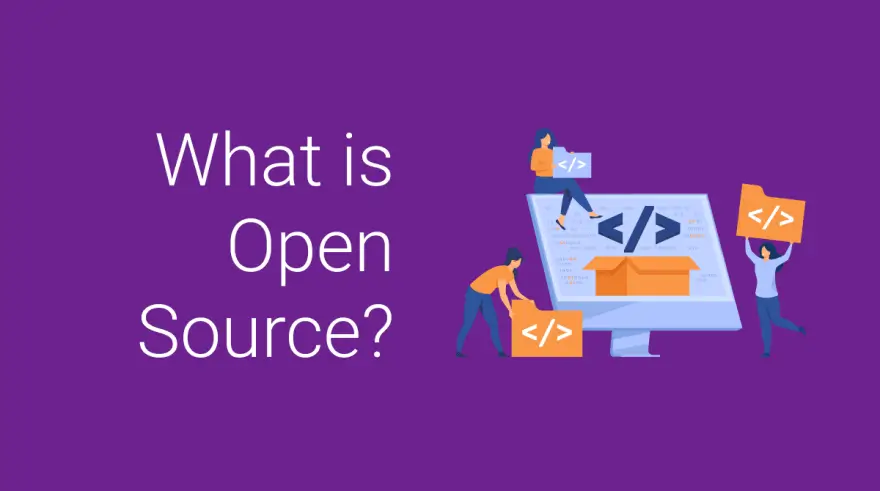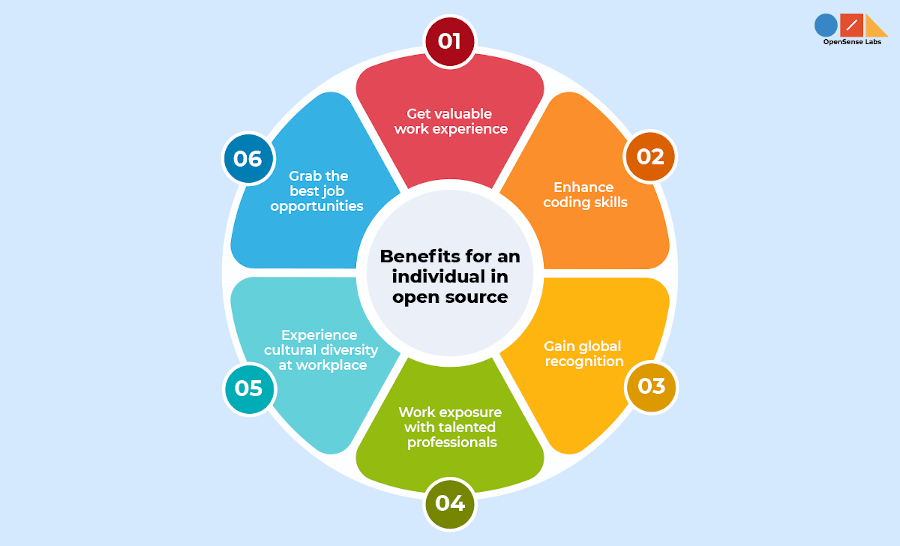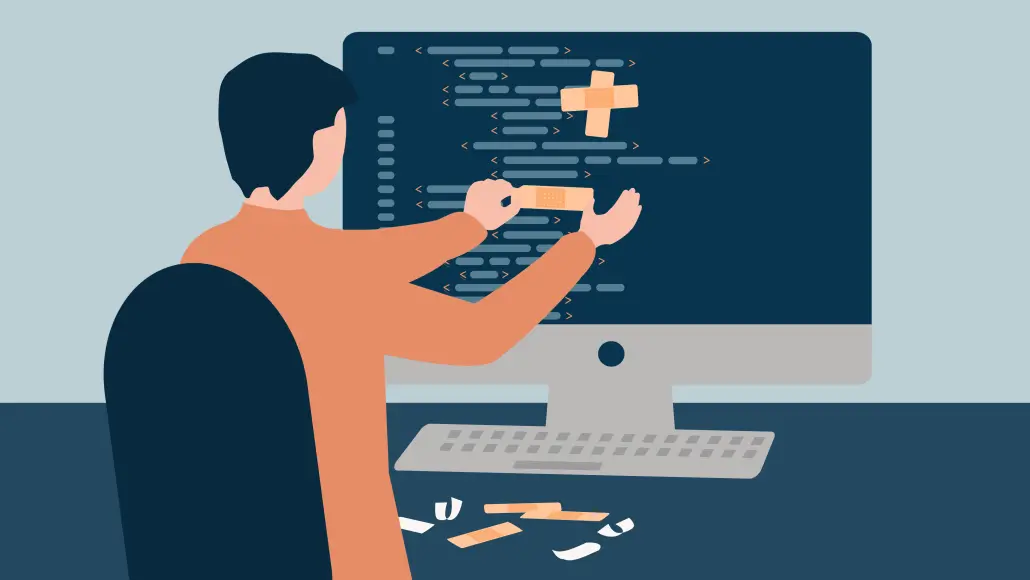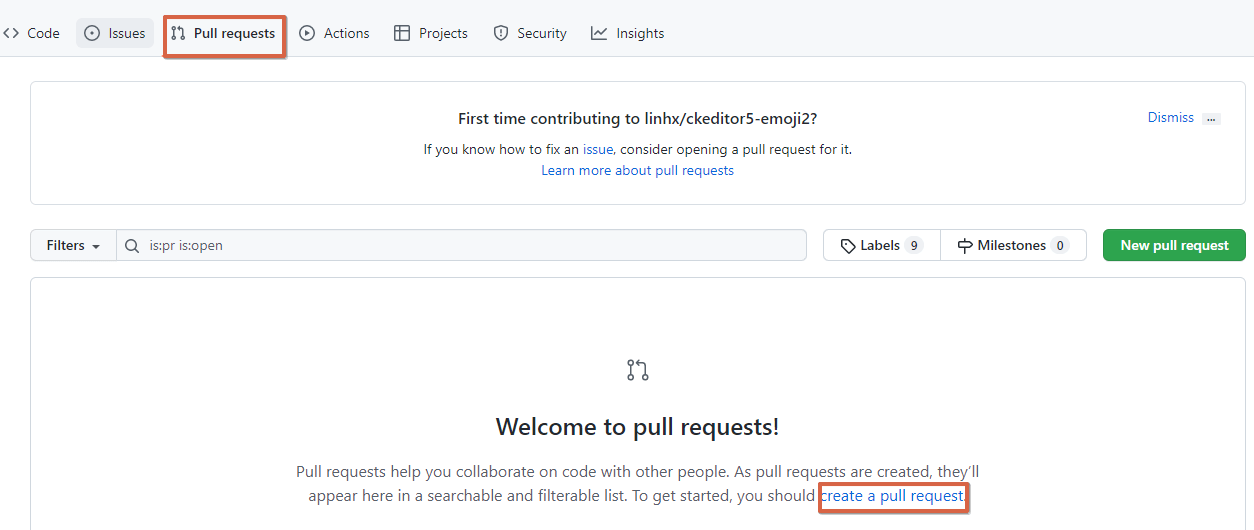Individuals and organizations have an increased desire to learn how to get started with open-source projects. While Open Source is not a new idea, its recent surge in popularity is due to the versatility and productivity of open-source platforms such as Linux, WordPress, and Apache, among others.
If you ever wonder how you can be part of the many contributions to open source, this article is for you. The guide will enlighten you on how to start contributing to open-source projects.
But first things first!
What is Open Source?
Open Source, or Open Source Software, refers to software released under a license that allows its source code to be freely available, and anyone can inspect, modify, and distribute. Usually, a community of contributors will often work together to improve and maintain the codebase.

The open-source philosophy relies on transparency, collaboration, and community-driven development. The source code of such software is openly available for anyone to access, inspect, and modify, which promotes transparency and accountability.
Besides, the collaborative nature of open-source development encourages diverse perspectives and expertise to contribute to the software’s development, resulting in more robust and reliable software.
Notable examples of popular open-source software, which was created using open-source programming languages include the Linux operating system, the Apache web server, the WordPress content management system, and the Python programming language.
Elements of An Open-Source Project
Notably, open-source projects have an array of elements that are typical to each of them. These elements work together to create an open-source project that is transparent, accessible, and collaborative.
By making the source code available to the public, open-source projects encourage community involvement, foster innovation, and create opportunities for collaboration and knowledge sharing.
The core elements of open-source projects include the following:
- Source Code – The code that makes up the project, which is available to the public for inspection, modification, reuse, and distribution.
- License – The legal document that outlines the terms and conditions under which an individual or organization can use, enhance, modify, or distribute the project’s source code.
- Documentation or README File – The documentation that explains how to use and contribute to the project. Documentation includes user manuals, developer guides, and API documentation.
- Issue Tracker – An issue tracker is a system used to track bugs, feature requests, and other issues related to the project.
- Version Control System – The system used to manage changes to the project’s source code, including tracking changes made by different contributors and managing different versions of the code.
- Community – The group of people who contribute to and use the project, including developers, users, and other stakeholders. The community may communicate through forums, mailing lists, chat rooms, or other channels.
- Contributions Process – The process by which people can contribute to the project, including submitting bug reports, patches, and other changes to the code. It is vital to maintain the best practices when doing this.
- Release Management – The process of preparing and distributing releases of the project, including creating and testing release packages, and managing the release process.
Benefits of Contributing to Open Source
There are several good reasons why you should consider contributing to open-source projects.

Some of the reasons include the following:
- Building Your Skills – Contributing to open-source projects is a great way to learn new skills and improve the ones you already have. You can work on real-world projects, collaborate with other developers, and get feedback.
- Gaining Experience – Every developer wants more experience under their belts and contributing to open-source projects can help you gain valuable experience and enhance your resume or portfolio. It shows potential employers that you have practical experience working on complex projects and collaborating with others.
- Networking – Open source projects provide opportunities to connect with other developers, build relationships, and expand your network. This can lead to new job opportunities, mentorship, and collaborations.
- Giving Back – If you intend to give back to the community and contribute to projects that benefit others, this is an excellent way to achieve that. Giving back is undoubtedly a rewarding experience that gives you a sense of purpose and accomplishment.
- Improving The Software – Open source projects rely on contributions from the community for improvement and maintenance. By contributing, you can help fix bugs, add new features, and improve the overall quality of the software.
- Recognition – Contributing to open-source projects can lead to recognition within the community. It is a good way of putting your name out there for peers and prospective employers. Your contributions may be acknowledged through documentation, code reviews, or other forms of recognition, which can help build your reputation as a developer.
How to Contribute to Open Source Projects
Many people think you can only contribute to open-source software projects if you are good at coding. This assumption is not true. For the record, you can contribute to these projects even with limited or no expertise in coding. However, it will be a plus if you have some coding skills.

Among the things that you should know include the roles in a typical open source project and understanding the different types of contributions you can make to an open source project.
1. Understand Your Role in the Open Source Project
It is essential to know that there are several roles in a typical open-source project and before you make any contribution to open-source software, you must understand your position.
Some of these roles include:
- Maintainer – The maintainer is responsible for the overall health and direction of the project. They oversee the project’s development, manage contributions from the community, and ensure that the project meets its goals.
- Contributor – A contributor adds or edits code, documentation, or other resources to the project. They can be anyone from experienced developers to beginners looking to get involved. This should be you if you only plan to contribute to open-source projects.
- User – Users are the people who use the project and provide feedback. They can report bugs, suggest improvements, or ask for new features without adding anything to the project. Often, most of us start from here.
- Tester – Testers are responsible for testing the project to ensure that it works as intended. They can be developers or users who help identify bugs and provide feedback on the project’s functionality.
- Documentation Writers – They create and maintain the project’s documentation, making it easier for users and contributors to understand how the project works and how to contribute.
- Community Manager – The community manager is responsible for building and maintaining the community around the project. They facilitate communication between contributors and users, help resolve conflicts, and organize events and activities.
- Reviewer – Reviewers are responsible for reviewing contributions from the community and ensuring that they meet the project’s standards for quality and functionality. They can be maintainers or experienced contributors.
These roles can overlap, and one person may fulfill multiple roles in smaller projects. In larger projects, there may be several people fulfilling each role.
2. Understand The Types of Contributions Made to Open Source
Note that there are several types of contributions that you can make to an open-source project. You can take note that there are several ways you can contribute to open-source projects, including:
- Code Contributions: if you have a code that can improve the project, this is one of the contributions you can make. It involves writing, testing, and submitting code changes to the project.
- Documentation – Many developers need help documenting their work.s. Moreover, some project documentations are either less detailed or less factual. Writing and updating documentation for the project can be a valuable contribution.
- Bug Reporting – Finding and reporting bugs in the project can help improve its quality. Most open-source projects will have an issue tracker to which you can report a bug. The bugs can be in the code or the documentation. Please be as detailed as possible while at it.
- User Support – Helping project users by answering questions and providing guidance. You can achieve this by blogging, tweeting, or answering questions from users.
- Translation – Translating the project’s documentation or interface into another language can make it more accessible to a broader audience.
- Design – Contributing design elements, such as icons, logos, or user interface designs, can help improve the project’s visual appeal. Of course, this does not need any coding skills.
- Community Building – Helping to build and grow the community around the project can be a valuable contribution. This may involve organizing events, creating social media content, or moderating forums.
- Testing – Testing the project and providing feedback can help ensure its quality and stability.
Overall, there are many different ways to contribute to open-source projects, and the best way to get started is to find a project that interests you and reach out to the community to learn more about how you can get involved.
3. How to Find an Open Source Project to Contribute
The most popular way to find a project to contribute is by browsing through popular code hosting platforms like GitHub, GitLab, and Bitbucket.
They have thousands of open-source projects to contribute hosted on their platforms. You can also look out for projects from open-source organizations such as Apache, Mozilla, and Linux, as they have a robust open-source community and offer several projects for contributors.
Following are the few resources that help you to contribute to new projects:
Other methods of finding a project include attending open-source events, using search engines like Bing and Google, and asking developers.
4. How to Choose an Open Source Project
Find various projects that interest you and settle on the most interesting ones. Look for projects that align with your interests, skills, and goals.
Once you have identified a project, please spend some time studying it. Learn about the project’s goals, structure, and documentation. It would be best if you also tried to understand the project’s codebase and any relevant technologies or frameworks.
Also, analyze your project of choice for license file availability, last action, and the number of contributions.
5. Join Open Source Community
Open-source projects are built by communities of contributors. Thus, so it’s essential to get involved with the community. Look for ways to connect with other contributors, such as through forums, chat rooms, or mailing lists.
Once in the community, check the project for any glaring issues. If you notice any problem, confirm if there are already any active discussions on the subject. Finally, check when the latest pull requests emerged.
Let us use GitHub for this illustration. Clicking on your project of choice will lead you to a dashboard with prompts for further action.

6. Make Your Contribution to Open Source
Once you’ve familiarized yourself with the project and its community, start contributing. Look for issues or features that you can work on. You can also contribute by writing documentation, testing code, or helping with project management.
You can do this by creating a new pull request. Pull requests are a way for contributors to suggest changes to a project maintained by others or to contribute to a project they have forked (i.e., made a copy of).
A contributor can fork a project, make changes to their fork, and then submit a pull request to the original project to merge their changes back into the original codebase.

When contributing to an open-source project, it is essential to follow best practices. This includes writing clean code, commenting, and testing your changes before submitting them.
7. Ask for Feedback On Your Contributions
Feel free to ask for feedback on your contributions. This can help you improve your skills and learn from other contributors. Contributing to open-source projects takes time and effort. Be patient, and keep going even if your contributions aren’t immediately accepted, or you encounter challenges.
What Are Pull Requests in Open Source Projects
Pull Requests are a way for contributors to suggest changes to an open-source project hosted on a version control system, such as GitHub or GitLab.
A pull request is a request to merge a branch or a forked repository into the main codebase of the project. Pull requests allow developers to propose changes and allow maintainers of the project to review and potentially accept or reject the changes.
The pull request process typically involves the following steps:
- Forking the repository – A contributor makes a copy of the project’s repository to their own account.
- Creating a branch – The contributor creates a new branch in their forked repository to work on the changes.
- Making changes – The contributor makes changes to the code in the branch.
- Creating a pull request – The contributor submits a pull request to the project’s repository, requesting that the changes be merged into the main codebase.
- Review and feedback – Maintainers of the project review the pull request, provide feedback and suggest changes if necessary.
- Merge or rejection – If the changes are deemed acceptable, the pull request is merged into the main codebase. Otherwise, the pull request may be rejected, or the contributor may be asked to make further changes.
Creating a Pull Request on GitHub
Here is an example of creating a pull request on GitHub:
1. Fork the repository – Click the “Fork” button on the project’s GitHub page to create a copy of the repository in your own account.
2. Clone the repository – Clone the forked repository to your local machine using the git clone command.
# git clone https://github.com/your-username/project-name.git
3. Create a new branch – Create a new branch to work on your changes using the git checkout command.
# git checkout -b my-feature-branch
4. Make changes – Make changes to the code in the branch and commit the changes using git commit.
# git add . # git commit -m "Added a new feature"
5. Push changes – Push the changes to the forked repository using git push.
# git push origin my-feature-branch
6. Create a pull request – On the GitHub page of your forked repository, click the “New pull request” button and select the branch you just pushed from the “base” dropdown and select the original repo as the “head” and fill in the required information to create the pull request.
7. Review and feedback – Maintainers of the project review the pull request, provide feedback and suggest changes if necessary.
8. Merge or rejection – If the changes are deemed acceptable, the pull request is merged into the main codebase. Otherwise, the pull request may be rejected, or the contributor may be asked to make further changes.
In summary, pull requests are a critical component of the open-source development process, allowing contributors to propose changes and collaborate with maintainers of the project to improve the codebase.
The process of creating a pull request involves forking the repository, making changes in a branch, submitting a pull request, and reviewing and accepting or rejecting the changes.
Conclusion
Getting started with open source projects involves choosing a project, studying it, joining the community, contributing, following best practices, seeking feedback, and being patient. With these steps, you can begin contributing to meaningful projects and building your skills as a developer.
